What is aromatic wine?
Aromatic wines are white wines where the flavour and aromas of the wine are preserved from the grape. This category includes Riesling, Pinot Gris and Gewurztraminer.
What do aromatic wines taste like?
Aromatic wines include a number of white wine varieties such as Riesling, Viognier and Gewürztraminer. Compared with other white wines where you may pick up hints of stone fruit, the flavour and strong aromas of aromatic wines tend to be of the grapes they are made with.
What makes them aromatic?
Aromatic wines contain more of an aroma compound commonly found in flowers like roses, lavender, geraniums and citrus blossoms. These compounds give extra body and strength to the flavours you’ll find when you nose your glass. If you’re the kind of person who likes to stop and smell the roses, there’s a strong chance you’ll love aromatic wines.
Popular aromatic wines in New Zealand
As you can tell from names like Riesling, Viognier and Gewürztraminer, these white wine grape varieties were introduced from France and Germany. However, New Zealand is home to a number of strong aromatic white wine regions, and we’ve put our own spin on them to make these wines our own.
→ Riesling
Among the sweeter of the aromatic wines, Riesling is a classic white wine grown over much of the South Island. Normally left on the vine until verging on over-ripe, these grapes are full of natural fructose sugar, lending Riesling wines a sweet honey taste.
Looking for an award-winning Riesling?

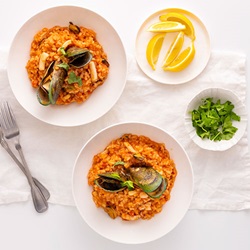
Riesling pairing
Refreshingly light New Zealand Riesling pairs exceptionally well with fish, seafood, and lighter chicken dishes. This is a wine that meets the occasion of formal dining served with appetisers before the main course, but is also perfect with fish and chips straight from the paper parcel.
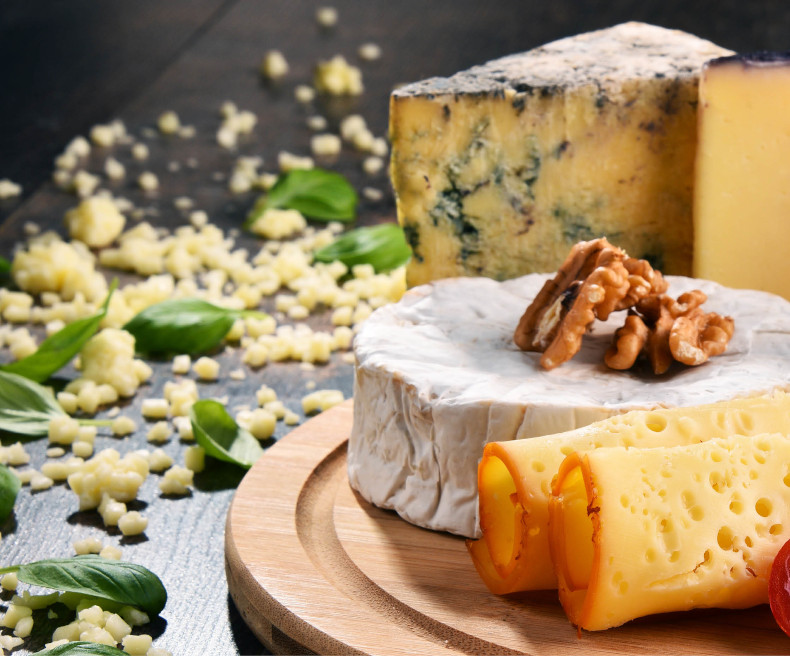
Pairing Riesling with cheese
If you’re creating a cheese platter, think saltier cheese that will balance out the sweetness. Good options are blue cheese, aged gouda, feta and havarti.
→ Gewürztraminer
Pronounced Ga-vertz-trah-meaner, this white wine’s flavour and aroma are often described as ‘spicy.’ Common tasting notes are black pepper, cinnamon, lychees or mangoes, which make Gewürztraminer a very distinctive wine.
Looking for an award-winning Gewürztraminer?
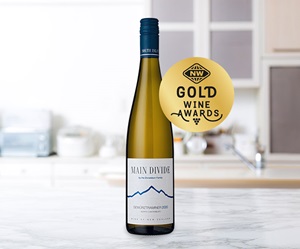
Main Divide North Canterbury Gewürztraminer 2020
Variety: Aromatics
Region: North Canterbury
Style: Off Dry White Wine
Price: $15 - $20
Key flavours: Apricot, floral, orange blossom, peach, spices, stone fruit
Special features: Sustainable wine growing, vegan friendly
Judges’ comments: Main Divide is the second label of the esteemed winery Pegasus Bay, and the Donaldson family are experts in crafting rich, flavoursome, aromatic wines. This tasty off-dry Gewürztraminer is exquisitely balanced and distinctively complex. Heady perfume with Turkish delight, honey, ginger and mango plus a hint of savoury spice. Enjoy with Indian cuisine, pumpkin ravioli or “stinky” washed rind cheeses.
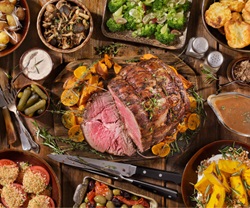
Gewürztraminer and meat pairing
The floral, spice and fruitiness of Gewürztraminer balances strong spicy flavours like curry and chili. Equally, more intense, game-meat flavours like venison or tahr.

Gewürztraminer and fish pairing
The sweeter, fruity flavours combined with its lower alcohol content and peppery notes make this wine an ideal pairing for Asian and spicy foods. The vanilla and coconut often found in green curry, laksa, South Indian, Thai or Vietnamese cuisines are heightened by the lychee aromatics in Gewürztraminer.

Gewürztraminer and cheese pairing
For such an aromatic white wine, you need an aromatic cheese. Try Munster, Livarot or Langres cheese.
→ Viognier
This dry white wine (pronounced Vee-on-yay) is known all over the world for its floral aromas. That’s a fancy way of saying it smells strongly of peach and apricot, and it is a delicious alternative to Chardonnay. Most of New Zealand’s Viognier vineyards are in Gisborne and Hawkes Bay.
Compared to Riesling and Gewürztraminer, Viognier is the driest of these three sweet wines. When tasting Viognier you should notice beautiful aromas of apricot, peach, honeysuckle and gingerbread.
Even though Viognier is an aromatic white wine, it’s commonly blended with reds such as Syrah to give them extra freshness and liveliness.
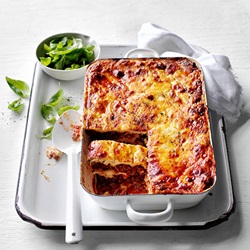
Viognier and meat pairing
The acidity and freshness of New Zealand Viognier wines cuts through rich and creamy poultry and fish dishes, making them an ideal pairing. Choose a mildly spicy curry like butter chicken, or a creamy dish like a rich, cheesy lasagna.
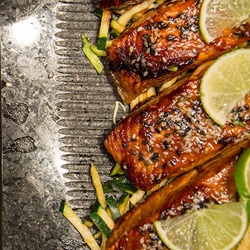
Viognier and fish
To balance out the sweet, fresh flavours of the wine, choose a meatier, oilier fish like Monkfish, Mackerel or Mahi-Mahi.
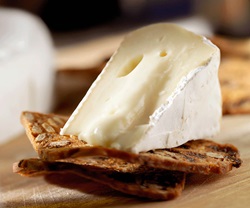
Viognier and cheese
Those same qualities make Viognier an ideal pairing for creamy, buttery cheeses like Camembert, Mozzarella or Brie.
Sweet wines
Dessert wines can be a tasty treat all by themselves, or served with the dessert course as the perfect accompaniment to round off your meal.
The extra sweetness comes from leaving the grapes on the vine for longer, like with Riesling, and by introducing a spore called Noble Rot which adds lovely ginger and honey flavours.
Popular sweet white wines in New Zealand
When you think of sweet wines, a fruity and flavoursome white wine usually springs to mind. Here are some of our favourite types of sweet white wine.
→ Moscato
Moscato is almost exclusively a dessert wine, very fruity, but with a signature grapefruit aroma. Moscato tends not to be very acidic, making it popular with fans of tropical fruit flavours like ripe pear, orange blossom, lemonade and honeysuckle.
→ Sweet Riesling
Within Riesling you can find a variety of aromas, from crisp apple and rose blossom, to bolder, citrus and stone fruit flavours like peach or lemon and lime. Today’s delicate flavours and tempered sweetness make Riesling the perfect summer wine.
→ Sweet Pinot Gris
While Pinot Gris shares some of Riesling’s sweetness, it has much less acidity and is more likely to be barrel aged. That wood contact lends Pinot Gris a more waxy mouthfeel, plus flavours of bread and honeysuckle.
→ Sweet Gewurztraminer
If you like Riesling there is a good chance you’ll also be a fan of Gewurztraminer. What sets Gewurztraminer apart is a distinctive spicy cinnamon-like flavour and sometimes a touch of bitterness. Gewurztraminer also has a unique aroma of lychee and rose petals.
Sparkling Dessert Wines
Bubbles and high acidity can make some sparkling dessert wines taste less sweet than they are.
Look for varieties such as Moscato, Spumante, Riesling and Gewürztraminer accompanied by these French or Italian words on the label:
- Moelleux, Doux, or Demi-Sec = ‘Sweet’ and ‘Off-dry’ in French. Not to be confused with Sec or Sekt which mean ‘Dry’ in French and German.
- Amabile, Dolce or Semi Secco = ‘Slightly sweet,’ ‘Sweet’ and ‘Off Dry’ in Italian. Again Don’t confuse this with Secco, which is Italian for ‘Dry.
Popular sweet red wines in New Zealand
If white wine isn’t to your liking, you can still have that lovely sweet dessert wine flavour with a red wine. Here are some of our favourite types of sweet red wine.
→ Rosé
The lighter, pink colour of Rosé is usually because the grape juice has had less contact with the rich, red grape skins. Rosé wine can be made using almost any red wine grapes, but the way Rosé is produced preserves more of the sweetness and freshness of the wine.
Looking for an award winning Rose?

Get your wine delivered to your door.
→ Dornfelder
This German red wine variety is very popular in Europe but not commonly found in New Zealand. This sweeter red wine is known for aromas of cherries, fresh blackberries and spiced herbs.
→ Black Muscat
A unique grape hybrid with an interesting flavour. Black Muscat can offer you toffee apple, candy floss, cinnamon and rose petals.
How are dessert wines made?
Dessert wines are made from grapes that have so much sugar, that as well as fermenting and producing enough alcohol to make the wine stable, there is still residual sugar left over to give the wine its luscious sweetness.
New Zealand wine producers use three techniques to enhance the sweetness of their grapes, and they all happen naturally in the vineyard.
In all these methods, there is always enough acid to balance the sugar so that the wine tastes luscious but not cloying.
Late Harvest
Late harvesting is where the grapes are left to over-ripen and shrivel slightly on the vine, which concentrates the sugar level. Late harvesting is commonly used to give Riesling wine its sweetness.
Noble Rot
There’s a reason wine and cheese are meant to go together. They both rely on mold to give them their unique flavours. New Zealand winemakers can allow the fungus Botrytis Cinerea, also known as Noble Rot to grow on the grape bunches. This fungus shrivels the grapes, reducing the water content and intensifying the sugar concentration.
As a side effect, Noble Rot also introduces flavours of ginger and honey, making it common in the production of dessert wines.
‘Ice Wine’ Dessert Wines
The final way to make grapes even sweeter is to let them freeze on the vine and harvest them while still frozen. The water in the grape is frozen, but the sugar remains a thick syrup, which is then pressed off and fermented. Obviously ice wines can only be produced in cold climates. The practice started in Germany, and in New Zealand can only be achieved in the South Island.
Because of the weather conditions needed to produce ice wine, it is not common in New Zealand and tends to be more expensive.
Storing and serving aromatic and sweet wines
Not all wine is made to be aged. Plus, you shouldn’t open a bottle of wine unless you intend on drinking it all within a day or two. Even wines that will age well when stored in a cool place out of direct sunlight will only last a few days once opened.
Related guide: Guide to storing wine
Storing aromatic and sweet wines

Aromatic and sweet wines can be aged for around five years before you open and drink them. The reason these white wines age well is because these wines have higher levels of sugar and acidity, which act as natural preservatives. By comparison, other white wines like Chardonnay or Sauvignon Blanc have lower levels of sugar and acidity and tend not to age as well.
If you’re storing wine for any length of time, always keep the bottle on its side. To prevent your wine going bad, you want to stop air from getting inside the bottle. By lying the bottle on its side, the wine comes in contact with the cork, preventing air from coming in.
How can I tell if my wine has gone off?
If you have been storing your wine for a long time it can be difficult to tell. However if you’ve had your sweet white wine sitting opened in the fridge for a fortnight, here are the tell-tale signs your aromatic wine isn’t good any more.
Firstly, the aroma. Is that fruity bouquet still fresh on your nose, or are there some weird, musty smells creeping in? The crisp, white colours of the wine may also turn a little brown. If in doubt, tip it out. Life is too short to drink bad wine.
Serving Sweet and Aromatic Wines

You can serve aromatic wines chilled, in a white or red (see below) wine glass. If you’d like to release more of the strong aromas, wait for the wine to become a little warmer.
Related guide: Guide to serving wine
What temperature should I serve aromatic or sweet wines?
White wine is usually served chilled, but if it’s too cold you may miss out on some of the subtle flavours and aromas. The finer the wine, the less it will need chilling. Anywhere between 5-10 degrees Celsius for light, sweet wines is appropriate.
What type of wine glass should I use?
In order to better capture the powerful, floral aromas of Viognier, Riesling and Gewürztraminer, some wine aficionados will serve these white wines in red wine glasses.
This is because red wine glasses have a larger base that tapers up to a smaller rim. This classic red wine glass shape traps the wine’s aroma, so you can inhale more of the delicious smells before you sip.


